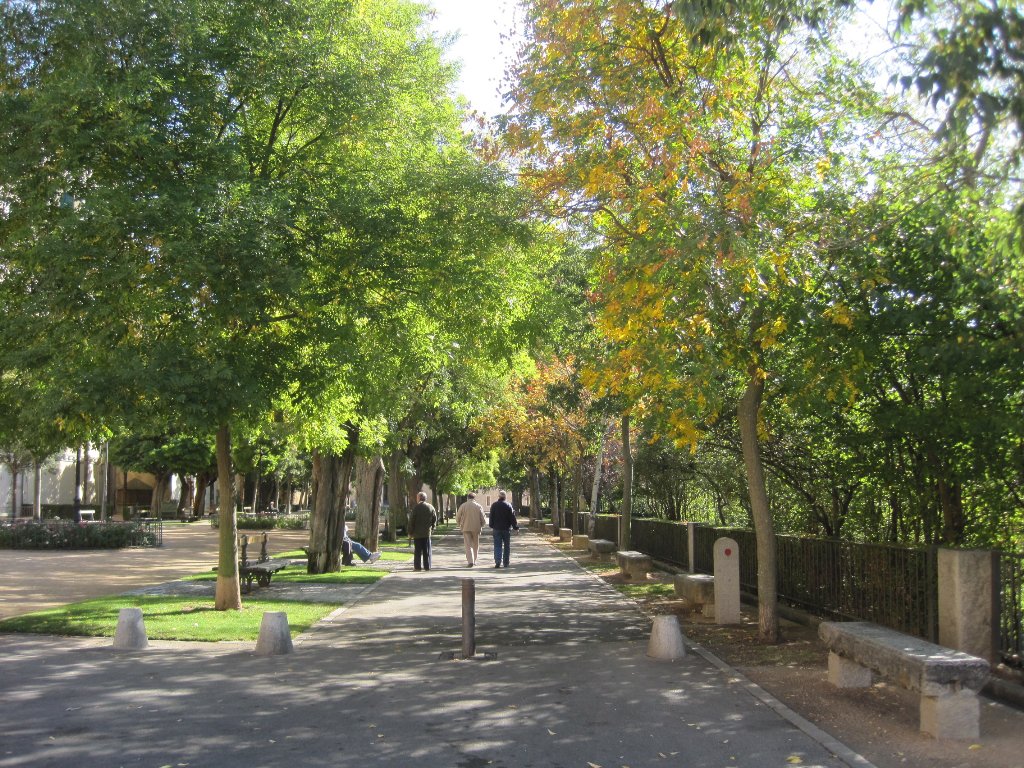90 kilometers from the Spanish capital and 1000 meters above sea level is one of the most traditional and historical cities in Spain: Segovia. The ancient city, located between the rivers Eresma and Clamores, is in the southern part of the autonomous community of Castilla y León, capital of the province of the same name. With more than 60,000 years of history, Segovia is one of the most visited cities in Spain for its wealth and cultural heritage. Despite the time of existence, it is a city very conserved due to projects of revitalization and cleaning. One of these was in the Paseo del Salón de Isabel II, a square in the old Segovia, with camouflaged garbage cans and lampposts that maintain beauty and at the same time do not disturb the traditions, examples of good engineering solutions.
A little bit of history
About 60 thousand years ago, the first occupation of the city by the Neanderthals was dated. It is believed that it was abandoned after the Islamic invasion, but after the conquest of Toledo by Alfonso VI de León, began the repopulation of Segovia in 1088 by Christians from the north of the peninsula. In the 12th century, located on the transhumance routes, it became a great trading center for wool and textile manufactures. Even that, in the sixteenth century, commanded by Juan Bravo, reached 27,000 inhabitants in its economic boom, in the next century began a period of decline reaching 8,000 inhabitants. In 1808, it was sacked by French troops during the war of independence and had a slow and relative economic revitalization.
Modern Segovia
Currently, with a population of 53 thousand inhabitants, Segovia has a large part of its economy in tourism (in 2016 it received more than 755 thousand tourists), in addition to the metallurgical, food industry, as sausages, construction and its materials, wood and furniture. Among the cultural heritage of the city we can highlight the Aqueduct of Segovia (it was considered, together with the old city of Segovia, a world heritage by Unesco in 1985), the Alcázar de Segovia, the monastery of San Antonio el Real, and the Cathedral of Santa María, consecrated the last Gothic church of Spain. It also has the festivities of San Juan and San Pedro, which attract tourists from all over the region.
Revitalization of the Paseo del Salón de Isabel II
The Salón was created in the eighteenth century and modified in the nineteenth by the Segovian Economic Society of Friends of the Country being a place of “stroll”, meetings, and fun (San Juan and Carnival was celebrated in this place) of Segovian society of the XIX and early twentieth. This is attested by its layout and the buildings that delimit it.
It has good views of the valley and the Sierra Carpetana. In addition, even if it is not one of the best-known tourist spots of the city, it is one of the favorite areas of the inhabitants of Segovia, with good views, pleasant weather and perfect for a picnic.
In 2012, the Department of the Environment began a consolidation and cleaning project on the slope of Paseo del Salón. In 2013, the city council carried out a new phase of the project to improve the image and appearance of the Paseo de Salón de Isabel II. Thus, at the head of the slope, granite paving stones were placed giving uniformity and continuity to that space. It worked with one of the fountain of the Paseo and the bust of the poet José Rodao. To these works it is necessary to add the installation of the inferior enclosure and its plantations of climbers and shrubs. The works were executed by the company Teófilo Sacristán, Teo Medioambiente, according to the project, written by the technicians of the Municipal Environment Service.
Before carrying out these works, the slope was very deteriorated due to the difficult access and misuse of some citizens who converted the slope into a deposit of multiple waste (papers, bags, bottles, containers …). Once the works at the head of the slope of the Paseo del Salón and on the slope itself were completed, the Environmental Service staff of the Segovia City Council oversaw preserving, cleaning and improving the green spaces, replacing those species that are necessary.
The Salón and the urbanism
The Revitalization of the Paseo del Salón de Isabel II is a good example of urban planning that respects the heritage of the area, with the goal of ensuring the well-being of the population. The traditions of the street Carnival, of the fairs, of the concerts and of the children playing in the Paseo if they keep alive until today and the place keeps preserved. The traditions are old, but the solutions are modern, and thanks to them, well-being and serenity continue there. Recommended the visit.

Photo 2. Paseo del Salón de Isabel II
Mauricio Lemos de Melo Bocuhy
